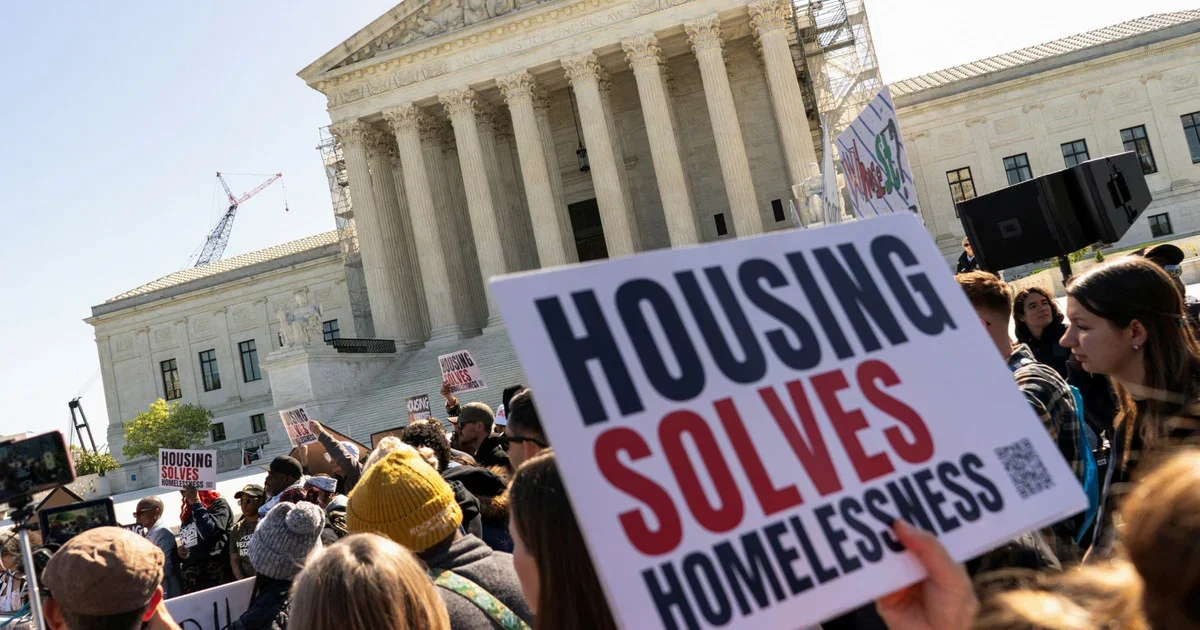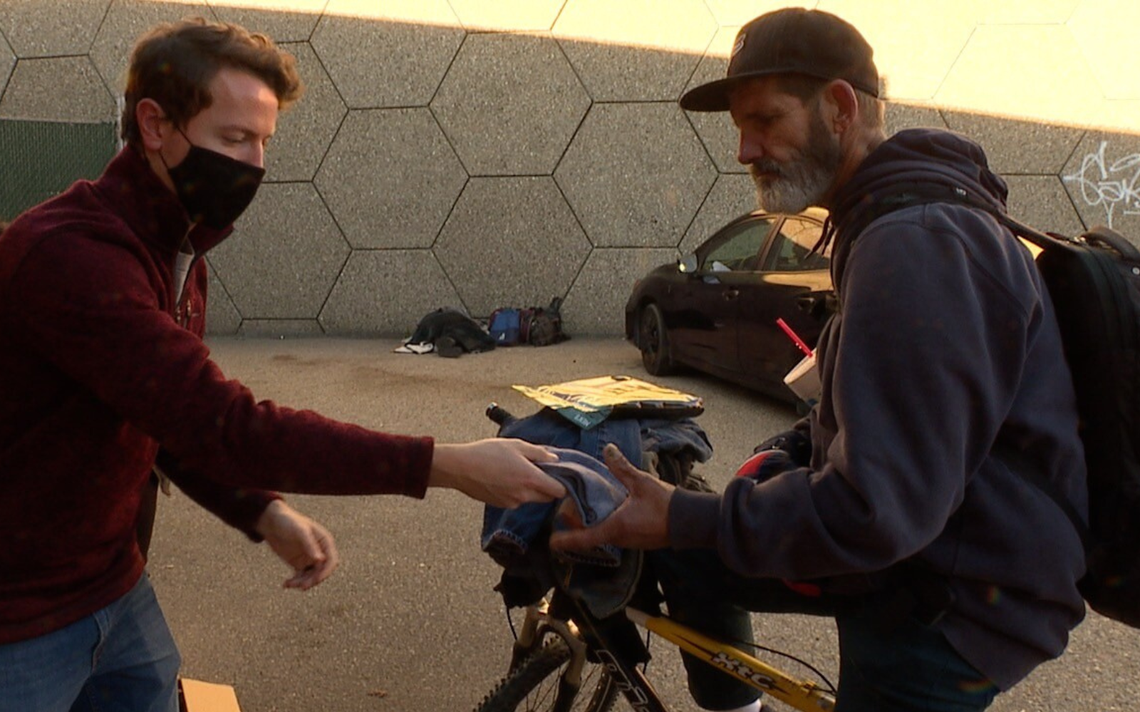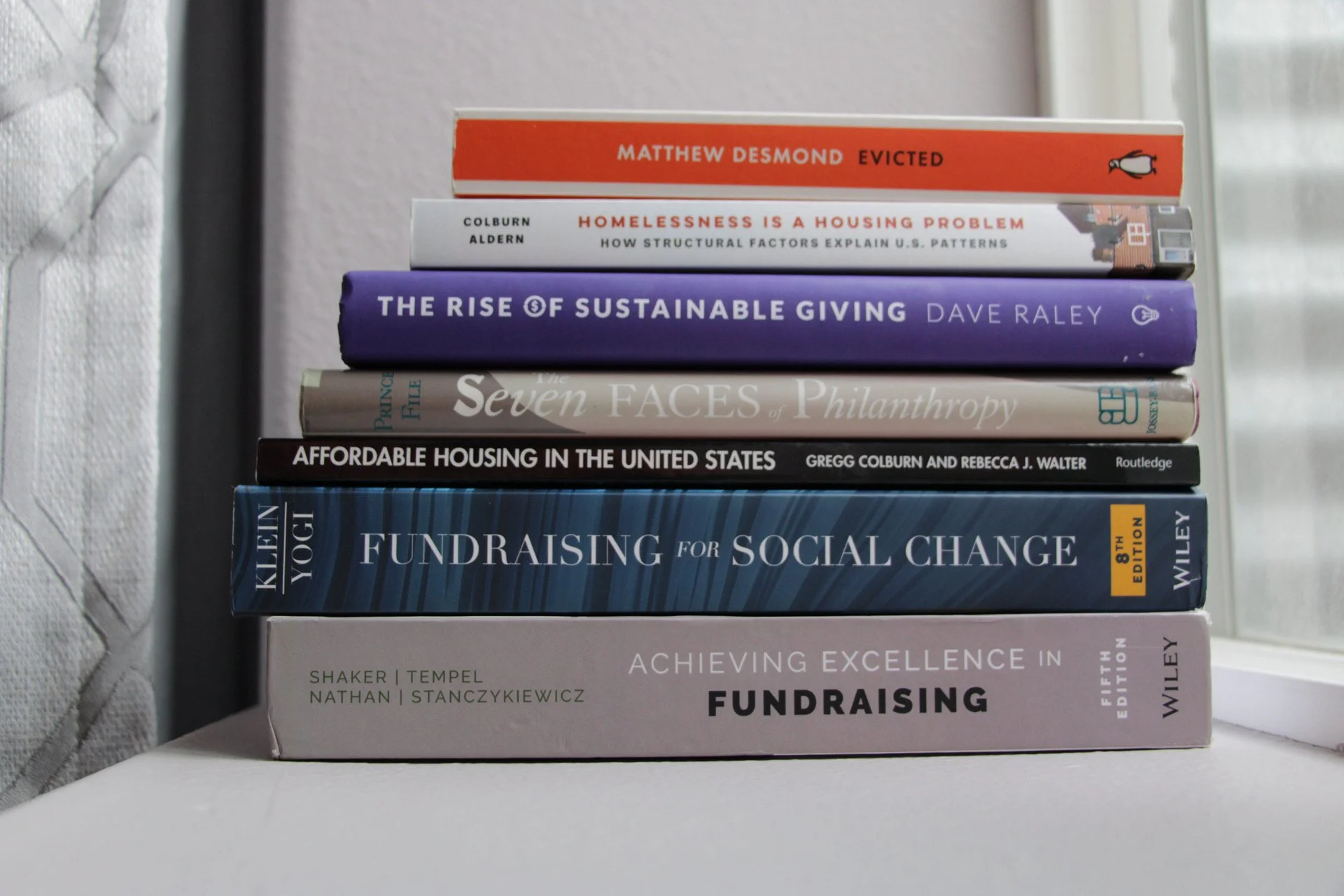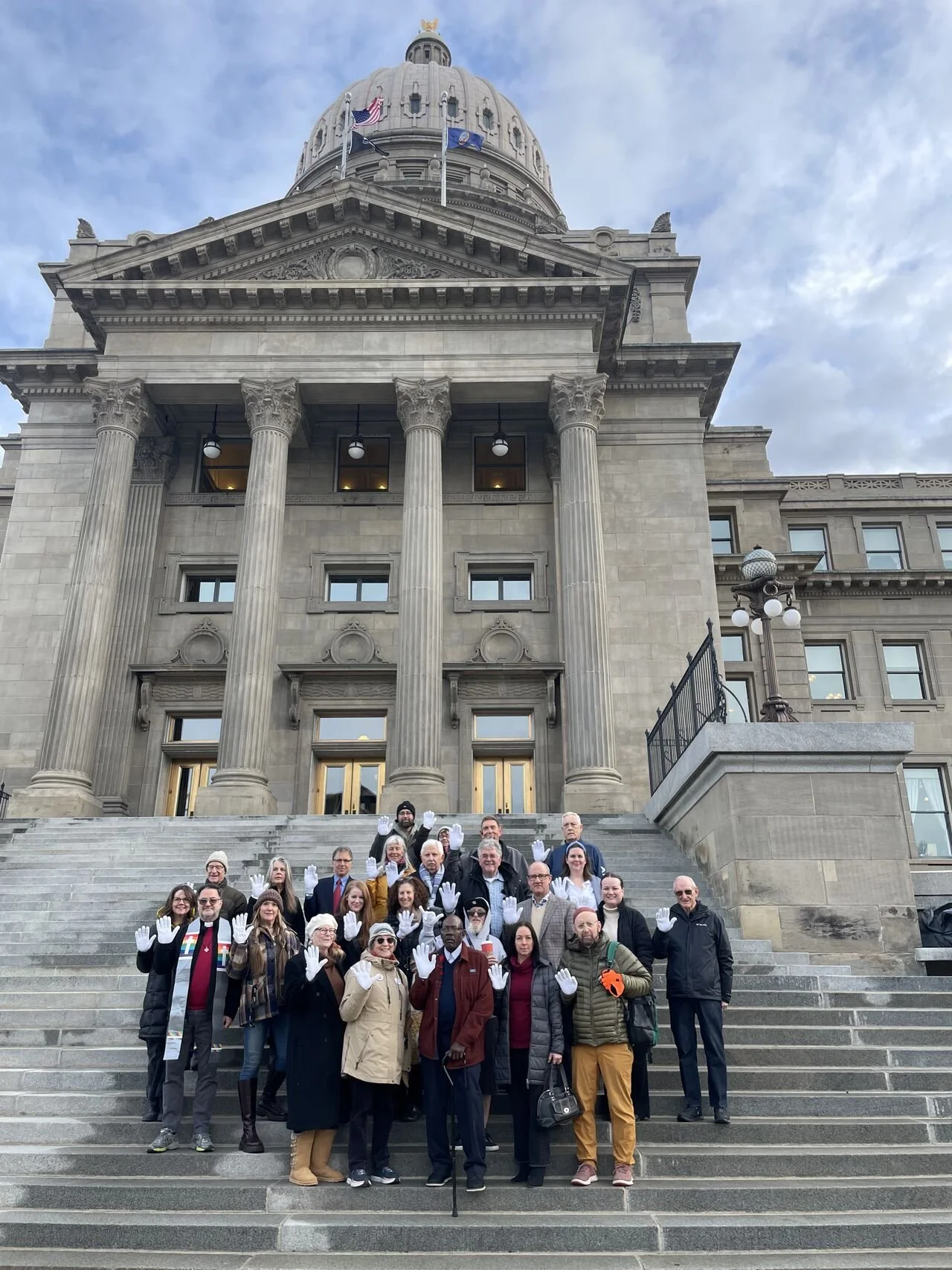The Evolution of People First
America is experiencing a true housing crisis (US Chamber of Commerce, 2025).
With upwards of 70% of Americans worried about housing affordability as wages remain stagnant and costs continue rising (NAEH, 2025; CAP, 2024), we’re facing more than market challenges—we’re facing a humanitarian crisis.
At People First, we believe housing is a human right—a foundational cornerstone of basic human survival (Maslow's hierarchy of needs: EBSCO, 2024).
Despite tired rhetoric suggesting people experiencing homelessness "want" to be homeless or "deserve" their situation, the reality is quite the opposite. When you build real relationships with people in the midst of trauma, when you witness their resilience and humanity up close, it becomes impossible to embrace the myths that let society look away.
That's why, as we celebrate three years of People First Communications, we're proud to announce our evolution: we're now specializing exclusively in supporting nonprofits working to end housing insecurity.
This decision represents years of deep engagement with housing justice leaders, personal relationships with people who've experienced homelessness, and proven results that show our approach creates real change.
Why Housing Justice
Our decision to specialize comes at a critical moment. Homelessness is so pervasive that many Americans, often without knowing, are regularly interacting with neighbors, friends, coworkers, and even family who have experienced homelessness at some point in their life. The United States Interagency Council on Homelessness has identified homelessness as an “urgent public health issue and humanitarian crisis” (n.d.).
There are a number of factors that make it extremely difficult to obtain an accurate count on the number of people experiencing homelessness. But, one thing all organizations seem to agree on is that the number of Americans experiencing homelessness continues to rise at an alarming rate.
The United States Department of Housing and Urban Development (HUD) reported the “number of people experiencing homelessness on a single night in 2024 was the highest ever recorded” (de Sousa & Henry, 2024).
Furthermore, families with children experienced the largest single year increase in homelessness. They estimate that on any given night nearly 150,000 children experienced homelessness in the United States. HUD attributes increasing levels of homelessness to the worsening affordable housing crisis in America, rising inflation and stagnant wages, and the persistent effects of systemic racism. These factors coupled with public health crises, natural disasters that lead to displacement, and the end of COVID-19 homelessness prevention programs has led to a system that is overwhelmed and underresourced.
But housing justice is about more than market trends and policy discussions—it’s about basic humanity.
As a society, we’ve made it easy to pass someone on the street who appears to be experiencing homelessness without so much as a glance. Most devastatingly, we’ve normalized the fact that our neighbors are living without their basic human needs being met.
Housing insecurity is an issue we’ve both cared about for a long time, and for Garrett his passion was ignited when he moved to London to earn his masters degree. There was a man named Craig who slept in the doorway of a bookstore across the street from his flat, and almost every day Garrett and Craig would greet each other in passing. Over time, they got to know each other better and eventually, their relationship led Garrett to volunteer with a nonprofit that distributed sandwiches to people experiencing homelessness in the sprawling city. During one of his conversations with Craig, Garrett discovered that Craig loved playing the harmonica. It turned out that Garrett had been falling asleep to Craig's music for months before ever realizing it was his new friend from across the street. This relationship with Craig, along with the others that he built throughout his year in London, left a lasting impression on Garrett.
Upon his return to the states, Garrett eventually became the Director of Development for CATCH, a Boise-based nonprofit dedicated to ending family homelessness in Southwest Idaho. Through his work with CATCH, Garrett was exposed to many of the realities of homelessness in our communities. He engaged with evidence-based solutions to ending homelessness and learned more about trauma-informed care. Most transformative, though, were his relationships with the families that CATCH served.
As Director of Development, he was tasked with telling CATCH’s story in a way that inspired community members to work together to end local homelessness. And, what’s more inspiring than the incredible stories of resilience and rebuilding of CATCH’s clients? Over time he developed close relationships with three families who had graduated from the CATCH program who had rebuilt their lives and found stability in housing of their own. And through these relationships he was given a unique window into what homelessness actually looked like.
Through these relationships, he (and me by extension) were privileged with a window from which we could see the resilience, the humanity, of people experiencing homelessness up close.
It was transformative, not just for his professional journey, but for us as people, and for the values we wanted to build our life on as a family.
When we moved to Scotland in pursuit of my masters degree, Garrett volunteered with a local group called Social Bite, a charity and social impact business with a unique approach to ending homelessness in the United Kingdom. What started as a coffee shop in Edinburgh has transformed into a full blown movement rooted in the belief that no one should experience homelessness. Garrett worked with them almost every week during their food outreach program, and by the time he took his last volunteer shift he was affectionately known as “the American” and could recite their tea and coffee orders from memory. Working with Social Bite taught Garrett more about how social interactions and food can act as bridges for bringing us closer together—it’s in their name after all! Beyond their outreach program, they also partnered with a local restaurant once a week and invited people experiencing homelessness to have a seated meal and share conversation. As an organization, they were all about restoring dignity and connecting through shared humanity. Many of their employees were formerly homeless, and they brought a passion and a fire to their work that inspired Garrett, and myself, to think deeply about what it means to be housing justice advocates and, most importantly, compassionate community members.
Eventually, we began talking more intentionally about what it might look like to really accept responsibility for our role in ending homelessness and how that might fundamentally shape the work of our business moving forward.
Our Journey to specialization
Starting People First Communications is one of the bravest things we've ever done. It’s challenged us and forced our growth, it’s allowed us to connect with many amazing people committed to change, and more than anything it’s given us the fuel to build a life we thought was only possible in our dreams.
Our origin story: People First was a brave leap we made as newlyweds, preparing for our move to Budapest, Hungary for my Fulbright assignment. After months of looking for remote jobs that would support our family beyond the minimal income the Fulbright Commission was offering, and many ongoing conversations about our brave new chapter, we sat on the couch in our tiny Boise apartment one night and said: “well, if we’re not seeing the right fit, why don’t we just create it?”
During our first couple years of People First, we were lucky to work with a variety of impactful nonprofits across a range of social impact causes. The work that really made us come alive was supporting organizations who were stepping in to meet folks’ basic human needs and create lasting social impact. At this time, Garrett was building the business full-time while I worked for the Hungarian Fulbright Commission, and continued to do so when we moved to Edinburgh, Scotland where I went back to school for my MSc. in Psychology.
Garrett was working on jumpstarting monthly giving programs, teaching new nonprofits the essentials of development, and most importantly, working alongside causes he cared about to increase their impact. During this time he earned his CFRE and his PMP certifications and built up an incredible network of supporters (shout out to those of you reading this article now!).
And in the process, what started out of circumstance became something so much greater.
It’s because of Garrett that People First has grown year after year, and become an invaluable resource for the groups we serve. For all intents and purposes, he was People First for our first couple of years. I would take on smaller projects as they came up, but as a full time grantee and student, it was Garrett driving the business, and our vision, forward. I offered encouragement and partnership along the way, especially when it came to taking the business public and developing our first website. This last fall though, things started to shift.
After I’d completed my MSc. dissertation and finished grad school, we made another big decision: launching our inaugural Avenues for Hope Accelerator program.
For those that might not know, Avenues for Hope is an annual holiday fundraising event hosted by the Idaho Housing and Finance Association that brings together nonprofits across the state of Idaho who are dedicated to ending housing insecurity. Over the course of three weeks, organizations campaign to raise money toward their causes, and, through participating in Avenues for Hope, are granted access to additional prize money that goes toward their fundraising efforts.
As the former Director of Development for CATCH, Garrett knew the program well and had even managed to land CATCH in the top fundraising slots during his time as Director of Development and through CATCH’s partnership with People First. It was a campaign he grew to care about quite a bit. And through People First, he had worked with multiple organizations to help them raise hundreds of thousands of dollars to start off the new year. Naturally, Avenues for Hope became a sort of de facto “speciality” of his, and I learned a lot about the campaigns throughout the years.
So in fall 2024 when I joined People First work full-time, we launched something new: combining my marketing experience and psychology research background with Garrett's development expertise to create a program that would transform how nonprofits approached their fundraising campaigns.
And so, our Avenues for Hope Accelerator program was born!
Over three months, we partnered with four organizations across Southwest and Northern Idaho to develop campaigns centered on our core belief: when you highlight the humanity of people being served, you create authentic community engagement that drives real change.
And… It worked! In just three weeks we helped these organizations raise a combined total of over $1.6 million. And in the process we discovered something invaluable: the powerful intersection of our unique skillsets—storytelling and relationship-based fundraising.
By using people-centered storytelling throughout these campaigns, we did more than just inform the community, we mobilized them. It taught us a lot about how the right story at the right time shared with the right person can shift perspectives, strengthen connections to cause, and drive engagement with donor bases.
At the end of 2024 (actually in the midst of these campaigns) we moved back to the States and with the looming conclusion of Avenues for Hope Accelerator and another year on the horizon, we were deep in discussions about the future and legacy of People First. In such a short amount of time, what had started as something to help us survive had given us a sense of purpose, ignited our passion, and amplified the work behind causes we cared about.
So, through a lot of long conversations about what would come next, we made yet another brave decision: to put our full weight behind People First.
With both of us working full-time together, and with the lessons we’d learned from the first few years coupled with the breakthrough success of our Avenues for Hope Accelerator we knew we had something special to offer nonprofits.
And that’s when we started planning our big shift.
Why Specializing Matters
Over the past three years, we’ve been fortunate enough to work alongside several nonprofits addressing housing insecurity across the continuum—everything from eviction prevention to emergency shelter to rapid rehousing—and through our partnership we’ve helped raised millions of dollars, but, more than anything, we’ve learned about our passion for seeing every person stably housed.
As people who care deeply about the interconnectedness of humanity, we care about a lot of social causes. But through our work we were exposed to two truths.
First, each social issue we care about comes with its own unique, tangled web of systemic challenges. We saw this through our work with various clients working on a diverse range of causes. The information and systems we needed for working with groups dedicated to creating sustainable food systems was a very different than what we needed to support nonprofits working on mental health resources, genocide prevention and recovery, uplifting underrepresented voices, or housing insecurity.
Working across these diverse causes taught us a second truth: while each social issue has its unique complexities, housing insecurity intersects with nearly all of them. Safe, stable shelter is the foundation that makes progress on other issues possible. Without housing, people are faced with interconnected challenges with health, employment, education, and more. When communities ensure everyone is housed, they unlock the capacity to tackle broader social challenges together.
And with this knowledge, we decided we could be even better partners to the nonprofits we served if we created the space we needed to really dive into understanding the root causes of homelessness and sustainable methods for addressing housing insecurity. By narrowing our focus, we can fine-tune our expertise, becoming well versed in this critical humanitarian crisis and offering our nonprofit partners the tools they need to connect with their communities and engage with this work in a deeper way.
Having been on the nonprofit side, we know that nonprofit leaders and team-members are strapped for time. We know that when you’re on the frontline every day providing life-changing services to some of our most vulnerable neighbors, that there’s not a lot of extra time for reading about national level policy or scientific inquiry into why homelessness is intensifying or engaging with social psychological hypotheses surrounding community engagement.
That’s where People First comes in. By narrowing our focus on ending housing insecurity, we are able to take more responsibility for our role in ending it and our deep engagement benefits all of our nonprofit partners.
At the start of 2025, we decided we’d like to try focusing just on nonprofits committed to ending housing insecurity. In the past seven months since, we’ve worked alongside nonprofits to push back against harmful legislation targeting people experiencing homelessness. Together, we mobilized communities to make real change—killing one destructive bill and forcing crucial conditions onto another. We’ve helped nonprofits raise more awareness and more funding for their cause, and supported community-level responses to community-level issues. Through this work, we've seen firsthand how the right story, told with dignity and purpose, can shift perspectives and drive real change.
Photo of Interfaith Sanctuary supporters against Idaho Senate Bill 1141 and 1166
We believe that homelessness is solvable. What we need is more people to care, and we need those caring people to take action. We’ve seen firsthand how restoring the humanity of folks experiencing homelessness through people-centered storytelling leads to community engagement, and how relationship-based fundraising leads to sustainable change.
We are committed to community-level solutions, grassroots coalition building, people-centered storytelling, and continuous learning. We are driven to understand the root causes and learn from the experts. But most importantly, we’re committed to learning about the reality of housing insecurity from the folks who have lived it and from those who stand on the frontline of addressing it every single day.
We’re not here to save the day, we’re here to amplify the impact that’s building in countless communities across our country. To help generate conversations that lead to lasting change, to support the ongoing work to serve folks who are too often left behind and overlooked, to stand alongside and collaborate as nonprofits tackle one of today’s most pressing challenges.
That is why People First’s third year represents something so much greater than a milestone—it's a celebration of our evolution into exactly who we’re meant to be.
Sources
US Chamber of Commerce. The State of Housing in America. March 17, 2025. https://www.uschamber.com/economy/the-state-of-housing-in-america
National Alliance to End Homelessness (NAEH). Key Takeaways from National Opinion Polling. May 2025. https://endhomelessness.org/wp-content/uploads/2025/05/Key-Takeaways-from-National-Opinion-Polling-May-2025.pdf
Americans recognize housing affordability crisis, support new policies to fix the market and build more homes. Center for American Progress. (2024). https://www.americanprogress.org/article/americans-recognize-housing-affordability-crisis-support-new-policies-to-fix-the-market-and-build-more-homes/
Maslow’s hierarchy of needs: EBSCO. EBSCO Information Services, Inc. (2024). https://www.ebsco.com/research-starters/psychology/maslows-hierarchy-needs
United States Interagency Council on Homelessness. (n.d.). Homelessness Data & Trends. https://usich.gov/guidance-reports-data/data-trends
de Sousa, T., & Henry, M. (2024). The 2024 Annual Homelessness Assessment Report (AHAR) to Congress. Part 1: Point in Time Estimates of Homelessness–December 2024 . https://www.huduser.gov/portal/sites/default/files/pdf/2024-AHAR-Part-1.pdf










